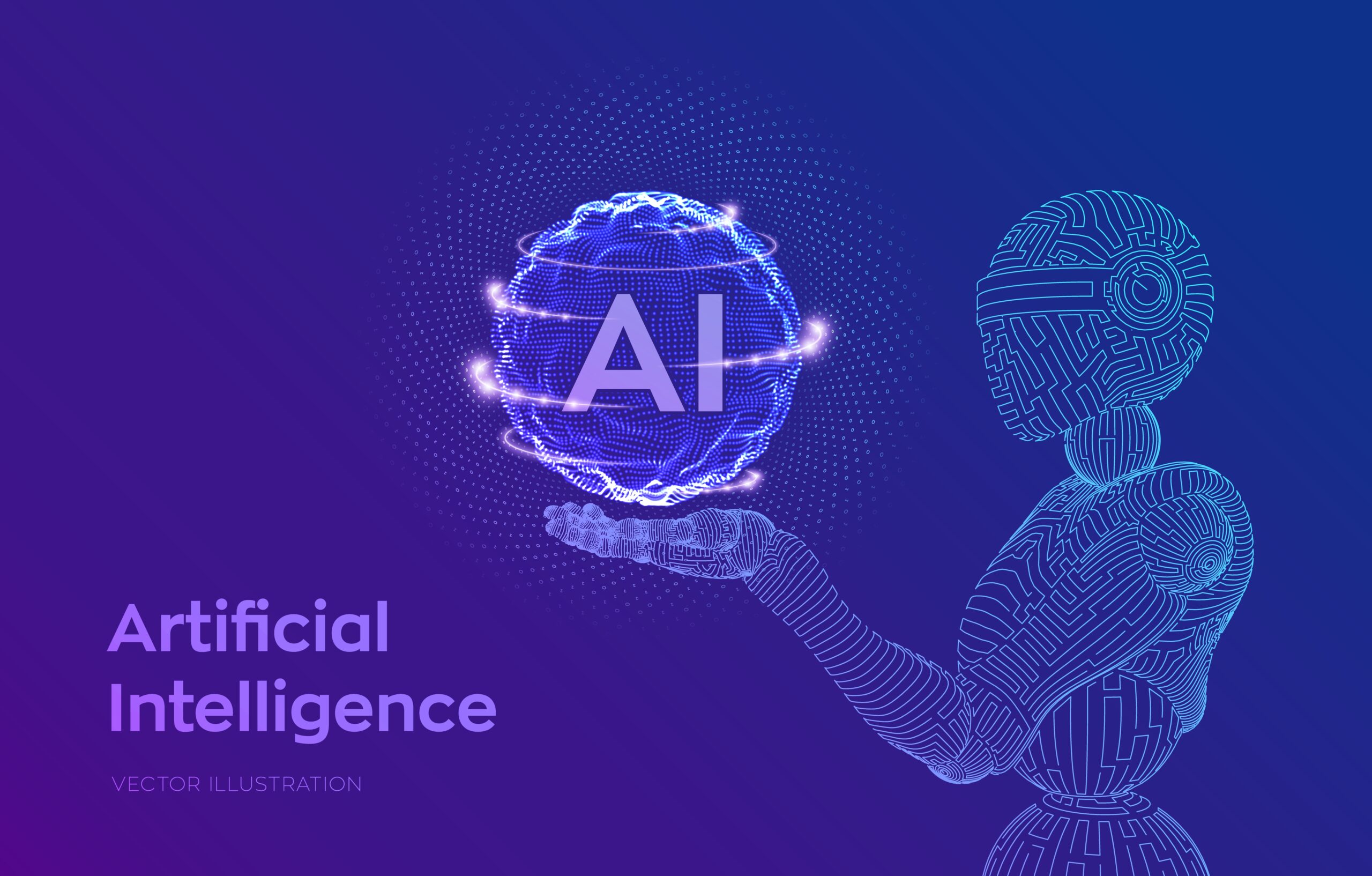logic is the backbone of AI and that it’s essential for AI systems to simulate human-like reasoning. logic remains a constant and integral component of AI’s development
Logic is a fundamental part of AI because it allows computers to draw conclusions from data, identify patterns, and make predictions 2. In AI, logic is used to represent and reason with knowledge in order to solve problems 2. It is a technique of knowledge representation in logical and mathematical form 3. Propositional logic is the simplest form of logic where all the statements are made by propositions. A proposition is a declarative statement which is either true or false 3. Logical AI involves representing knowledge of an agent’s world, its goals, and the current situation by sentences in logic 4. The agent decides what to do by inferring that a certain action or course of action is appropriate to achieve the goals 4. In addition to propositional logic, many other tools are used in AI, including versions of search and mathematical optimization, and methods based on probability and economics 1. The main focus of AI is towards understanding human behavior and performance 1. By creating computers with human-like intelligence and capabilities, AI has the potential to revolutionize many industries and has a wide range of applications, from virtual personal assistants to self-driving cars
The Foundation of AI: Symbolic Logic Symbolic logic, also known as formal logic, serves as the cornerstone of AI by providing a systematic way to represent and manipulate knowledge. AI systems use symbols and formal languages to encode information. It explains concept of knowledge representation, showing how AI relies on symbolic logic to create structured representations of facts, rules, and relationships. early AI systems like expert systems that heavily relied on symbolic logic to illustrate its foundational role.
Making Inferences with Propositional Logic Propositional logic is a fundamental component of AI that allows machines to draw conclusions from given premises or facts. propositions represent basic statements and how logical operators like AND, OR, and NOT are employed for making inferences. AI systems use propositional logic for problem-solving, decision-making, and reasoning tasks.  apply propositional logic in rule-based systems and search algorithms to solve complex problems.
apply propositional logic in rule-based systems and search algorithms to solve complex problems.
some practical examples of how AI systems use propositional logic for problem-solving, decision-making, and reasoning tasks:
- Medical Diagnosis: AI systems can use propositional logic to diagnose medical conditions based on symptoms and other patient data 2. For example, an AI system can use propositional logic to determine whether a patient has a particular disease based on their symptoms and medical history.
- Robotics: AI systems can use propositional logic to control robots and other autonomous systems 3. For example, an AI system can use propositional logic to determine the optimal path for a robot to take through an environment based on its sensors and other data.
- Natural Language Processing: AI systems can use propositional logic to understand and generate natural language . For example, an AI system can use propositional logic to determine the meaning of a sentence based on its grammatical structure and the meanings of its individual words.
- Game Playing: AI systems can use propositional logic to play games such as chess and poker . For example, an AI system can use propositional logic to determine the optimal move to make in a game based on the current state of the game and the rules of the game.
- Expert Systems: AI systems can use propositional logic to create expert systems that can provide advice and guidance in a particular domain . For example, an AI system can use propositional logic to provide legal advice based on a set of rules and legal precedents
Predicate Logic and the Complexity of AI Predicate logic extends beyond propositional logic and plays a crucial role in representing more complex relationships and knowledge. In this section, delve into the concepts of predicates, quantifiers, and variables in predicate logic. predicate logic enables AI systems to represent structured information, making it suitable for natural language understanding, semantic web technologies, knowledge graphs, and other contexts where complex relationships need to be captured.
Predicate logic, also known as first-order logic, plays a crucial role in artificial intelligence (AI) for knowledge representation and reasoning. It extends propositional logic by introducing variables, quantifiers, and predicates to represent more complex relationships and statements. Here are some key points about how predicate logic is used in AI:
- Symbolic Representation: Predicate logic provides a formal, symbolic language to represent facts, rules, and relationships in AI systems. It uses variables (e.g., x, y), constants (e.g., objects or values), predicates (e.g., P(x), Q(x, y)), and logical operators (e.g., AND, OR, NOT).
- Quantifiers: Predicate logic includes universal quantifiers (∀) and existential quantifiers (∃) to express statements about all or some objects in a domain. For example, ∀x P(x) means “For all x, P(x) is true,” and ∃x Q(x) means “There exists an x such that Q(x) is true.”
- Inference and Reasoning: AI systems use predicate logic for logical inference and reasoning. They can derive new conclusions by applying logical rules and patterns to existing knowledge represented in predicate logic.
- Knowledge Bases: In AI, predicate logic is often used to create knowledge bases, which store information about the world. These knowledge bases can be queried to answer questions or make decisions based on the stored facts and rules.
- Rule-Based Systems: Expert systems and rule-based AI systems commonly use predicate logic to encode expert knowledge as rules. These rules can be applied to make decisions or provide recommendations.
- Natural Language Processing: Predicate logic is also used in natural language processing (NLP) to parse and understand the semantics of sentences. Sentences can be transformed into predicate logic statements for deeper analysis.
- Ontologies: In knowledge representation, ontologies are often structured using predicate logic to define concepts, relationships, and hierarchies. This is important in fields like the Semantic Web.
- Uncertainty Handling: While predicate logic deals with binary true/false statements, AI systems often extend it to handle uncertainty and probabilistic reasoning, as in Bayesian networks and fuzzy logic.
Overall, predicate logic provides a robust foundation for knowledge representation, reasoning, and inference in artificial intelligence, enabling AI systems to model and manipulate complex real-world relationships and make intelligent decisions based on symbolic knowledge.
Fuzzy Logic and Handling Uncertainty Fuzzy logic is an essential component of AI, as it helps AI systems deal with uncertainty and vagueness in data and decision-making. In this part of our blog post, we will explore the principles of fuzzy logic, explaining how it handles uncertainty by allowing for degrees of truth. Provide practical examples, such as in temperature control or decision-making under uncertainty, to show how AI systems utilize fuzzy logic. Highlight the concept of membership functions and how they enable AI to make more flexible and context-aware decisions.
Fuzzy logic is a mathematical framework that deals with uncertainty and imprecision in a more nuanced way than traditional binary (true/false) logic. It was developed by Lotfi Zadeh in the 1960s and has found applications in various fields, including artificial intelligence, control systems, decision making, and expert systems. Here are some key characteristics and applications of fuzzy logic:
- Degree of Truth: Unlike classical logic, which is based on crisp true or false values (1 or 0), fuzzy logic allows for the representation of degrees of truth. In fuzzy logic, propositions can have a membership value between 0 and 1, indicating the extent to which a statement is true or false. This is particularly useful for handling uncertainty in AI and decision-making systems.
- Linguistic Variables: Fuzzy logic enables the use of linguistic variables, such as “very hot,” “somewhat cold,” or “extremely fast,” which are inherently imprecise but can be effectively used in control systems and human-centric AI applications.
- Fuzzy Sets: Fuzzy logic operates with fuzzy sets, which allow elements to belong to a set to a varying degree. Fuzzy sets are defined by membership functions that specify how much an element belongs to the set.
- Fuzzy Rules: In fuzzy logic systems, rules are expressed in the form of “if-then” statements, using fuzzy propositions. These rules can capture complex relationships between input variables and output variables, making fuzzy logic suitable for control and decision support systems.
- Fuzzy Inference: Fuzzy logic systems use a process called fuzzy inference to make decisions based on fuzzy rules and input data. Fuzzy inference typically involves operations like aggregation, defuzzification, and rule-based reasoning to produce crisp output values.
- Applications: Fuzzy logic is used in various applications, including fuzzy control systems for industrial processes, home appliances, and robotics. It is also applied in decision support systems, natural language processing, image processing, and expert systems to handle imprecise or vague information.
- Fuzzy Mathematics: Fuzzy logic has its own set of mathematical operations and concepts, including fuzzy arithmetic, fuzzy relations, and fuzzy optimization, which are used to model and solve problems involving uncertainty.
Fuzzy logic is particularly valuable when dealing with systems and data that involve ambiguity, imprecision, and human-like reasoning. It allows AI systems to make decisions and control processes in a more human-understandable and adaptive manner, making it a useful tool for addressing real-world problems that are not easily captured by traditional binary logic.
Machine Learning and Logic: A Powerful Combination Explore the synergy between machine learning and logic in AI. Describe how AI systems combine logical reasoning with machine learning techniques, such as neural networks and decision trees, to create more intelligent systems. Explain the concept of knowledge representation in neural networks, where symbolic information is integrated with learned patterns, enabling AI to make informed decisions based on both structured knowledge and data-driven insights.
Common Logic-Based AI Applications Highlight specific AI applications where logic plays a vital role. Discuss how logic enhances AI in various domains, such as natural language processing, robotics, expert systems, and autonomous vehicles. Provide concrete examples of how logic is applied in these domains, showing how it contributes to more efficient and precise decision-making in real-world scenarios
Headline 7: Challenges and Future Directions in Logical AI Discuss the challenges and limitations that logic-based AI faces. Explore topics such as the scalability of logic-based AI for handling large knowledge bases, dealing with uncertainty in real-world situations, and staying up-to-date with the latest research in the field. Mention emerging trends and areas of research, such as explainable AI (XAI) and cognitive computing, which aim to improve the transparency and human-like reasoning capabilities of AI systems.
Scalability is a critical consideration when using logic-based AI systems to handle large knowledge bases. Logic-based AI, often based on technologies like predicate logic, rules, and knowledge representation, faces challenges as the knowledge base grows in size and complexity. Here are some factors and strategies related to the scalability of logic-based AI for handling large knowledge bases:
- Inference Complexity: As the knowledge base grows, the complexity of performing logical inference also increases. Inference involves searching through rules and facts to draw conclusions. More extensive knowledge bases may result in slower inference times, potentially impacting real-time decision-making.
- Optimization Techniques: Various optimization techniques can improve the efficiency of inference in large knowledge bases. These include rule indexing, caching of intermediate results, parallel processing, and the use of specialized algorithms for specific domains.
- Rule-Based Systems: Logic-based AI often uses rule-based systems to represent knowledge. Scaling such systems might involve prioritizing and organizing rules, using rule hierarchies, or employing conflict resolution strategies to manage a large set of rules efficiently.
- Distributed Knowledge Bases: Distributing the knowledge base across multiple servers or nodes can help manage large knowledge bases. This can be done through techniques like distributed databases, partitioning, and load balancing.
- Modularity: Breaking down the knowledge base into smaller, more manageable modules can enhance scalability. Each module can focus on a specific domain or topic, making it easier to maintain and extend the knowledge base.
- Semantic Technologies: Some AI systems incorporate semantic web technologies, like RDF (Resource Description Framework) and OWL (Web Ontology Language), to represent knowledge in a scalable and standardized way. These technologies allow for efficient querying and reasoning over large knowledge graphs.
- Machine Learning Integration: Combining logic-based AI with machine learning can help handle large knowledge bases more effectively. Machine learning algorithms can be used to assist in pattern recognition, classification, and knowledge extraction from unstructured data, reducing the burden on the logic-based system.
- Incremental Updates: Implement mechanisms for incremental updates to the knowledge base rather than wholesale replacements. This allows for efficient maintenance and growth of the knowledge base over time.
- Knowledge Pruning: Over time, some knowledge may become obsolete or less relevant. Implementing mechanisms to prune outdated or irrelevant information can help maintain the quality and performance of the knowledge base.
- Scalable Infrastructure: Ensure that the underlying infrastructure (e.g., hardware, storage, and database systems) is capable of handling the scale of the knowledge base. Scalable cloud-based solutions can be beneficial in this regard.
In summary, the scalability of logic-based AI for handling large knowledge bases involves a combination of algorithmic optimizations, distributed architectures, modular design, and integration with other AI technologies. It’s an ongoing challenge in AI research and development to efficiently manage and reason over vast amounts of knowledge while maintaining acceptable performance.








Your writing is so relatable and down-to-earth It’s like chatting with a good friend over a cup of coffee Keep sharing your wisdom with us
I appreciate how well-researched and detailed your posts are It’s evident that you put a lot of time and effort into providing valuable information to your readers
This blog post is packed with great content!